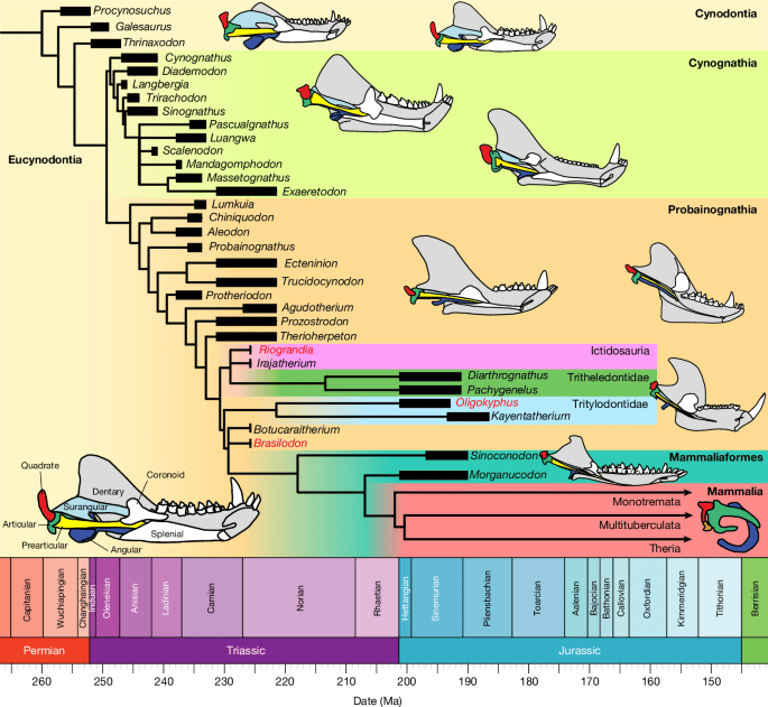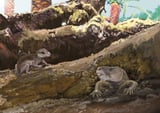Ancient Jaw Evolution: New Study Challenges Mammalian Ancestry Theories
September 25, 2024
Dr. Agustín Martinelli highlighted the significant contributions of Brazilian fossils to our understanding of mammalian evolution, with ongoing multinational collaborations promising further discoveries.
Despite advancements in understanding cynodonts, gaps remain in the anatomical interpretation of jaw joint evolution due to limited fossil availability.
Lead author James Rawson emphasized that the evolution of the mammalian jaw joint represents a pivotal moment in mammal evolution.
The findings prompt a reevaluation of existing theories regarding the evolution of the mammalian jaw hinge.
A recent study published in the journal Nature reveals a more complex evolutionary history of jaw structures in mammals than previously understood.
The research highlights that the extinct cynodont species Riograndia guaibensis exhibited a 'mammalian-style' jaw joint 17 million years earlier than the previously oldest known example, while Brasilodon quadrangularis did not show this feature.
The two cynodont species studied lived during the Late Triassic epoch, approximately 225 million years ago.
Zhe-Xi Luo from The University of Chicago described this discovery as significant, potentially changing the understanding of mammalian jaw evolution.
Using CT scanning, researchers reconstructed the jaw joint anatomy, revealing that Riograndia's jaw joint is more similar to modern mammals, despite Brasilodon's closer relation to living mammals.
The study reexamined Brasilodon's jaw joint morphology, which retains the ancestral quadrate-articular joint without a dentary-squamosal articulation.
Mammals are characterized by their unique jaw hinge, formed by the dentary and squamosal bones, which allows for more precise chewing compared to other vertebrates.
Professor Marina Soares noted the unique diversity of cynodont forms found in Brazil, which are crucial for understanding early mammalian evolution.
Summary based on 6 sources
Get a daily email with more Science stories
Sources

Nature • Sep 25, 2024
Brazilian fossils reveal homoplasy in the oldest mammalian jaw joint
Nature • Sep 25, 2024
A jaw-dropping discovery about early mammals
Popular Science • Sep 25, 2024
A 225-million-year-old fossilized jaw joint shifts evolutionary timeline
Phys.org • Sep 25, 2024
Brazilian fossils reveal early evolution of mammalian jaw and middle ear